Kodiak bear – an island giant
If he wanted, he could sow terror among the inhabitants of the Kodiak villages. He would be able to defeat every enemy, kill almost every predator. Despite the huge potential of the beast, Kodiak is an extremely well-balanced, wise and gentle animal. He attacks only when he defends himself or when he is surprised. Although he is a typical loner every day, he can calmly hunt in the company of other Kodiaks. His life is based on the balance of profits and losses. It seems that he understands that cooperation will do more good than a bloody fight.
Classification
- Kingdom: Animalia
- Phylum: Chordata
- Class: Mammalia
- Order: Carnivora
- Family: Ursidae
- Genus: Ursus
- Species: Ursus arctos
- Subspecies: Ursus arctos middendorffi
- Names: Kodiak bear, Kodiak brown bear, Alaskan brown bear
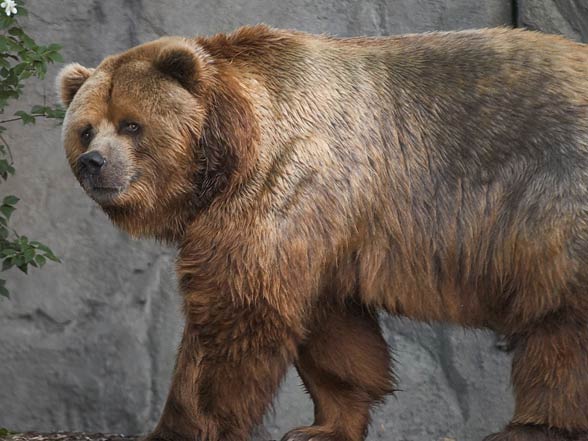
Occurrence
Kodiaks live exclusively on the islands of the Kodiak Archipelago, located south of Alaska. These bear populations live the most on the islands: Kodiak, Afognak, Raspberry, Shuyak, Sitkalidak and Uganik.
Habitats
Powerful “teddy bears” have adapted to live in an oceanic sub-polar climate. It is characterized by low temperatures, cloudy, fog, wind and almost year-round rainfall, from moderate to intense rain. Climatic conditions do not spoil so Kodiak grizzly.
Spruce forests, mountains, areas of tundra plains are found on these islands. The flora depends on the location of the island. The archipelago therefore has rather diverse natural conditions. Therefore, Kodiak bears adapt to the conditions on the island.
Human presence is significantly limited – urbanized areas are found only on the island of Afognak and on the north-east of the Kodiak Island.
About 50% of the area of the archipelago is located in the Kodiak National Wildlife Refuge, which is why these animals are found in a large part in legally protected areas.
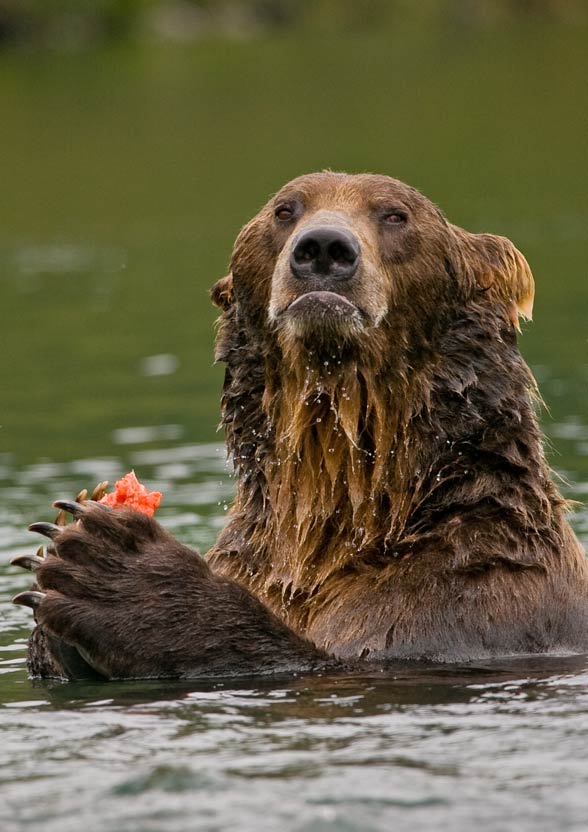
Characteristic
Appearance
Kodiak looks like a grizzly. Similarly to him, he is massive, has a powerful head with a wide mouth, huge paws and great strength. The whole body is overgrown with a very thick coat, the shade of which varies from beige to dark brown. The individuals in the southern archipelago seem to be brighter than their northern relatives are. Blonde or beige fur is also more common in females.
The adult male Kodiak bear is about 244 cm (8 ft) long, 133 cm (4 ft 4 in) high at withers and weighs 477–534 kg (1,052–1,177 lb). On average, females are 20% smaller and 30% lighter than males.
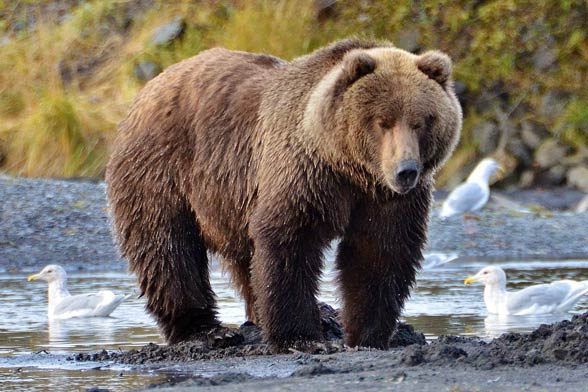
Diet
In spring, Kodiak bears eat plants and carcasses of animals that have not survived the winter. When the summer comes, the menu is widening. Variety of plants helps to survive bears, which are waiting for the return of their favorite prey – salmon.
The fish come between May and September. In the Kodiak streams and lakes, bears also appear there, perseveringly hunting for nutritious Pacific salmon. In the early autumn, blueberries dominate the menu of Kodiak bears. A good source of food is also seaweed and marine invertebrates – the bear’s walk on the beach in search of food is not new. A large rarity for this is the hunt for deer or mountain goat (Oreamnos americanus), although both types of these mammals are abundant in the Kodiak Islands. The diet is supplemented by waste left by people.
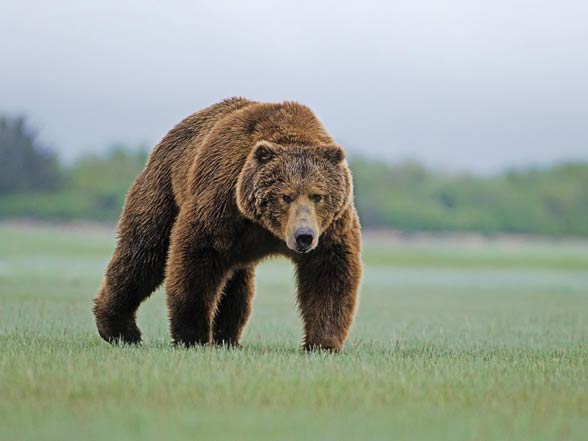
Lifestyle
In harmonious conditions, Kodiak bears are active during the day. However, if they have to compete for food or territory in a given area, they prefer night activities. This second strategy is often taken by individuals living near human buildings.
Although they are powerful and respectable animals, they do not tend to fight for territories. Each bear, however, has a favorite area, to which it returns cyclically. Since Kodiak Island is a place rich in food (there is no need to cover long distances in search of food), bears living there occupy the smallest territory among all populations of North American brown bears.
In the natural state, they are solitary beings. However, if large amounts of food are concentrated on small areas (e.g. along a stream or carcass of a large animal), they form temporarily large groups of up to 60 individuals. Yet, in groups of giants, fighting and deadly skirmishes are rare. Bears have put in place for cooperation, verbal and non-verbal communication and a hierarchical social structure, which certainly increases success during fishing and foraging.
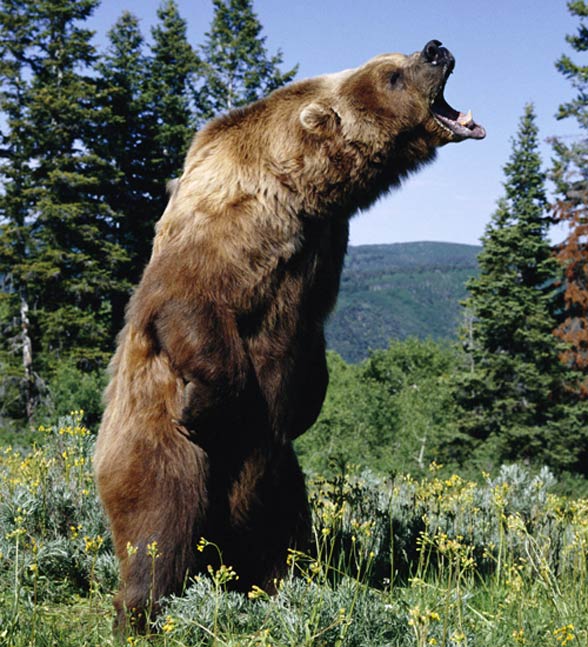
Bear’s lair
Most Kodiaks create lairs on the hills or on the mountain slopes, although the location of the lair depends on the terrain on the island.
Kodiaks begin to hide in their lairs at the end of October. The first to do so are usually pregnant females and the last – adult males. After the winter sleep, the first awakened bears appear in early April. The females who gave birth during the winter sleep stay in the tavern with their offspring even until the end of June.
The bears, living in the northern parts of the archipelago, sleep longer than their southern cousins. Interestingly, almost a quarter of adult individuals give up their winter beds in order to remain active in winter.

Contact with people
They try to keep distance from people. The problem occurs when the animal is surprised, attacked or when it approaches the city too close to finding food. It is best to avoid situations in which Kodiak bear will feel threatened.
So far, only two deaths of a Kodiak bear have been recorded. This took place in 1921 and 1999. Both incidents concerned hunting hunters. On average, once every two years, a man is wounded by a Kodiak bear.
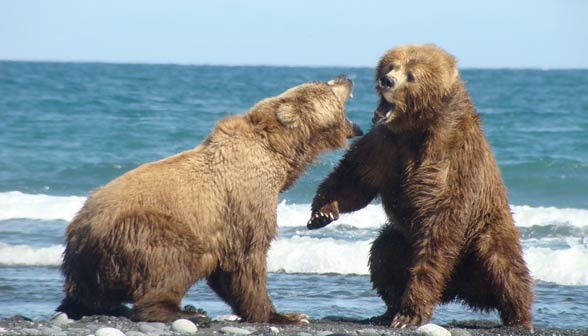
Reproduction
Females reach sexual maturity at about 5 years of age, but the first pregnancy occurs at about 9 years of age. Only during this time, females are able to feed their first offspring. On average, bears are born every 4 years. Their fertility persists until the end of their lives, although after about 20 years it significantly decreases.
The breeding season is in May and June. At this time, females and males form temporary monogamous pairs (one partner per season). The couple stays with each other from 2 days to 2 weeks.
Fertilized egg cells do not immediately nest in the uterus wall. This is done only in autumn. When the embryo nestles in the uterus, it begins to grow. This phenomenon is called delayed implantation and is common among female bears falling into a winter sleep.
Young (usually 2-3, but they can be up to 6) come into the world between January and February. Newborns are almost bald and blind. They feed on their mother’s milk for the first few months. For the first time, they come out of a lair in May or June, when they weigh 6-9 kg (at birth they weigh less than 0.5 kg). Bear cubs stay with their mother for about 3 years, but almost 50% of young people die before independence. The most common cause of death is cannibalism on the part of adult males.
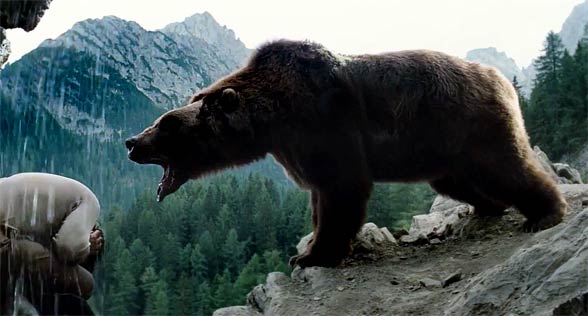
Detailed data / dimensions
Kodiak bear (Ursus arctos middendorffi)
- Body length: male on average 244 cm (8 ft)
- Height at the withers: male on average 133-150 cm (4 ft 4 in – 4.9 ft)
- Height (on two legs): male up to 3 m (9.8 ft)
- Weight:
- males: 477–534 kg (1,052–1,177 lb), before winter sleep reach even 680 kg (1,500 lb)
- females: 181 to 318 kg (399 to 701 lb)
- Maximum lifespan in the wild:
- males: up to 27 years
- females: up to 35 years
- Females are 20% smaller and 30% lighter than males
- The largest registered individual in the wild state weighed 750 kg
- The largest registered individual in captivity weighed 966 kg (2,130 lb). He lived in a zoo in Dakota and he was called Clyde. The ZOO director claimed that about a year before he died, Clyde weighed over 1,090 kg (2,400 lb). The giant died in June 1987 at the age of 22.
- One of the biggest known Kodiak bears was Bart the Bear – a bear known for his film performances, especially from the movie Bear, directed by Jean-Jacques Annaud and the Edge. Bart, standing on his hind legs, measured 290 cm and weighed 680 kg.

Kodiak bear – interesting facts
- The Kodiak bear is slightly smaller than the largest modern bear species – the polar bear.
- Kodiak is the largest brown bear subspecies in the world.
- Kodiak is one of the largest land predators.
- Over the last decade, the number of bears has been slowly increasing.
- Bears between the ages of 3 and 5 very often die. About 56% of males and 89% of females will survive to adulthood.
- The majority of adult females find areas close to their home areas, while males are more likely to set off on a further hike.
- About 56% of adult females die from natural causes, while about 91% of males die at the hands of hunters.
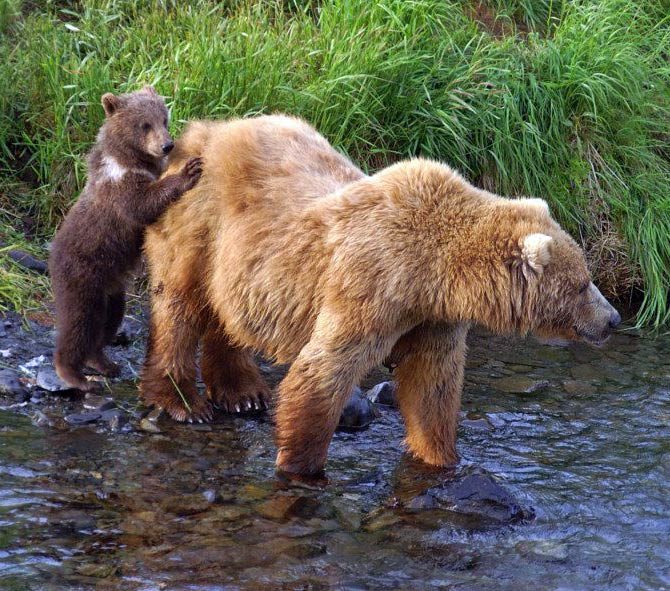
Recommended
- Grizzly
- Fastest animals
- Fastest birds
- Lion vs tiger
- Animal fights
- American lion
- European cave lion
- Smilodon – Saber-toothed tiger
- Big cats
- Black panther
- Leopard
- Snow leopard
- Lions
- Tigers
- White lions
- White tigers
- Bengal tiger
- Sumatran tiger
- Liger
- African Lion

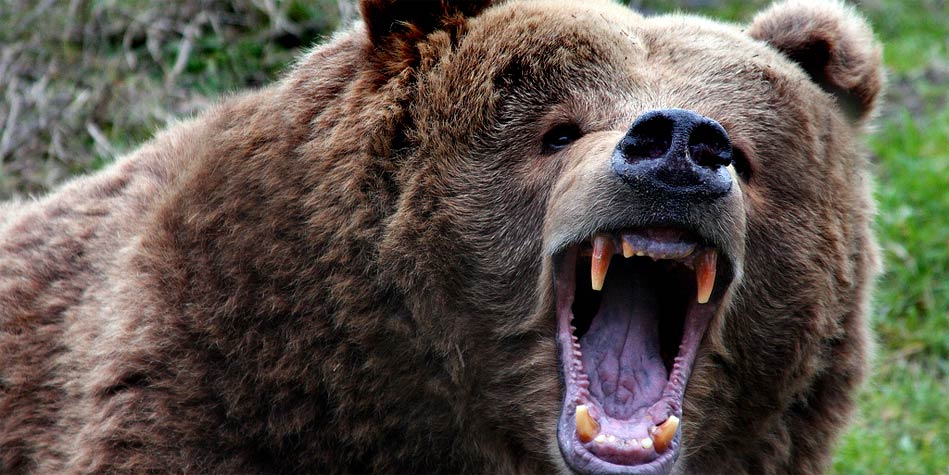
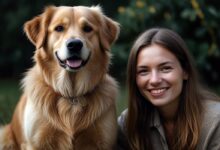

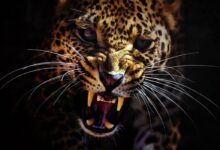
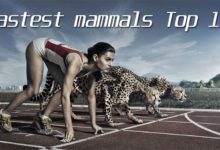



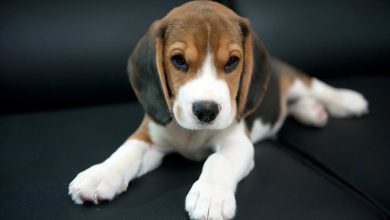
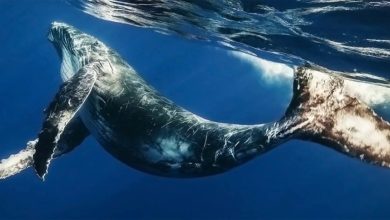


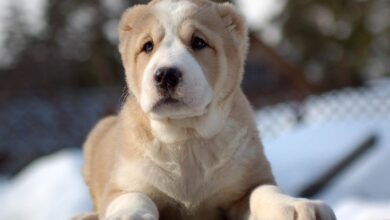
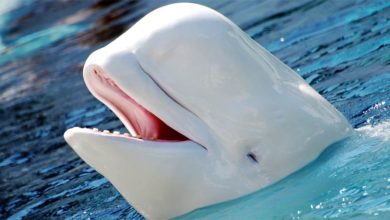
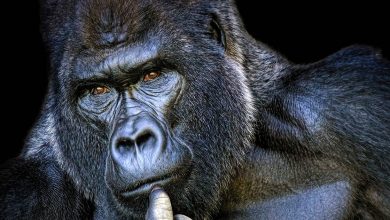
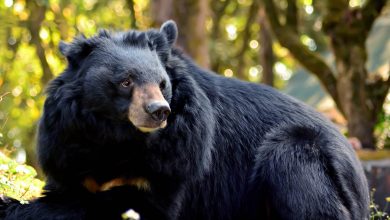
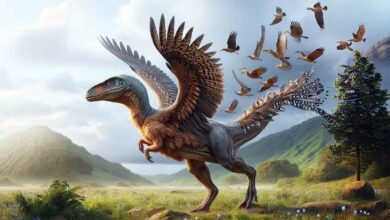
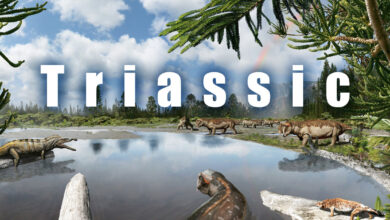
The Kodiak Bear’s Claw is about TWICE the size of the Polar and Grizzly Bear, the paw is also bigger….THERE IS SIMPLY NO CONTEST.